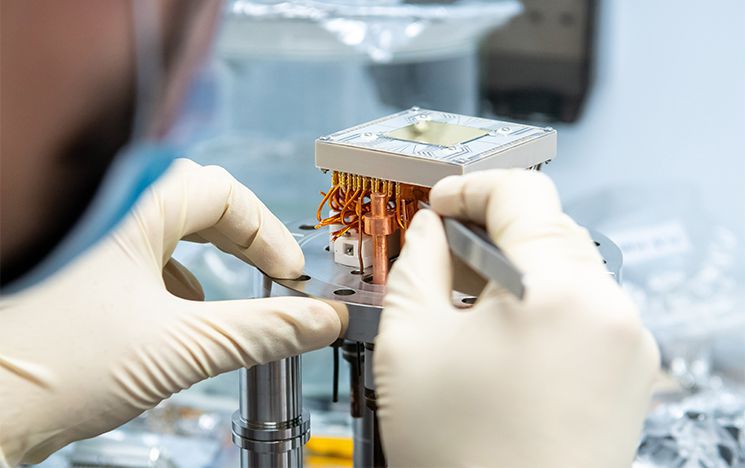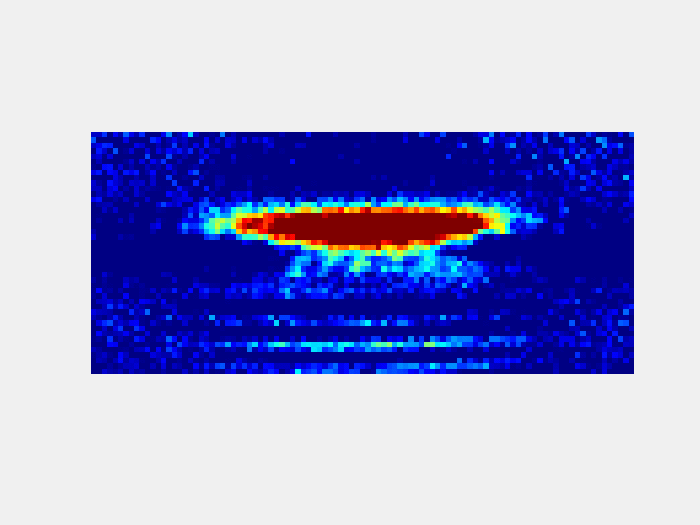Quantum gases on atom chips
A Bose-Einstein condensate (BEC) consists of a cloud of hundreds of thousands of rubidium atoms cooled down to nanokelvin temperatures which is more than a billion times colder than freezing. At this point the atoms take on a different property and behave all together as a single quantum object. This quantum object has special properties which can sense very low magnetic fields.

The phase transition to Bose-Einstein condensation (BEC) occurs when a dilute gas of bosons is cooled to such low temperatures that the thermal de Broglie wavelengths of the individual atoms grow so large as to overlap. This phenomenon sees the entire gas behaving as a single, macroscopic quantum object, which is a remarkable model system to study, and has provided new insights into the field of condensed matter physics.
Our experiment is focused on studies of atomic rubidium Bose-Einstein condensates trapped on the surface of a so-called atom chip. This device consists of gold conductors which have been microfabricated using photolithography on the surface of a silicon substrate. Currents flowing through the atom chip wires produce tailored magnetic fields, which are then used to levitate and confine a quantum gas just a few micrometers from the room-temperature chip surface. By employing either DC or radio-frequency magnetic fields, these systems offer an unprecedented degree of spatial and temporal controllability for both the internal and external degrees of freedom of trapped quantum samples.
We have designed and built a robust and efficient experimental system for producing large samples of rubidium Bose-Einstein condensates consisting of 100,000 atoms at a temperature of several hundred nano Kelvin. The system features a hybrid combination of millimeter-sized copper structures and the microfabricated atom chip wires, along with the well-established techniques of laser and evaporative cooling, to handle clouds across the vast spatial and temperature scales spanned throughout an experimental cycle.
Our setup is highly controllable and flexible, allowing access to a large variety of experimental schemes. The magnetic potentials afforded by the atom chip can provide extremely strong confinement, and so are inherently capable of realising systems with effectively reduced dimensionality, on which there has been much theoretical work. In particular, we create samples of BECs in both one and three dimensions, along with in the interesting intermediate crossover regime between the two. In addition, currently we are interested in studying the dynamics of these quantum systems after they have been brought out of equilibrium - a situation for which the atom chip is an ideal tool, and one that is still very much an open problem in condensed matter physics.

Radio-frequency dressing in our lab, causing a Bose-Einstein condensate to split in two.